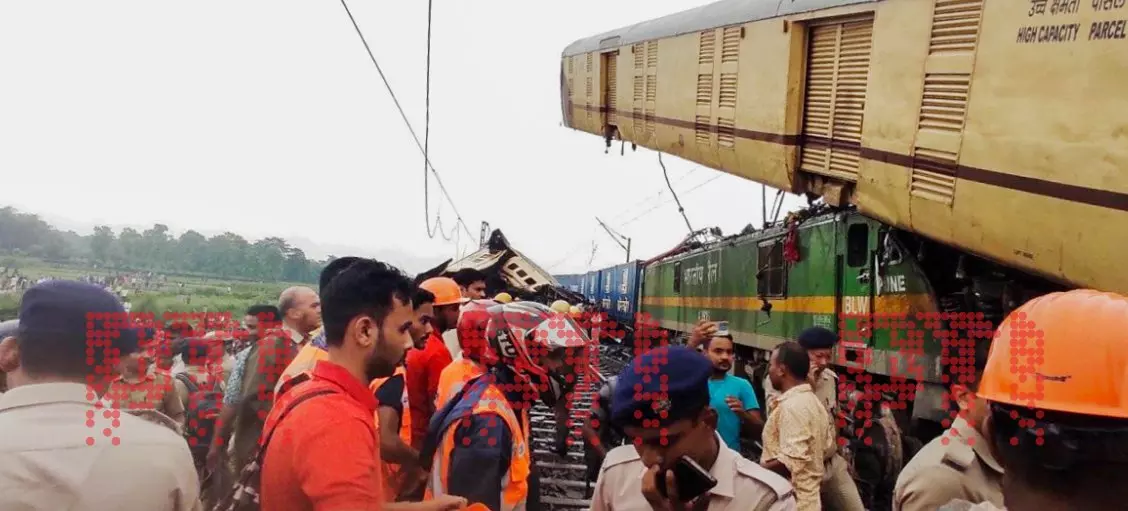
Missing Kavach system, signal overshot may have led to Bengal train crash
According to media reports, the Kavach system was not installed on the tracks in Darjeeling, where the collision occurred.

Even as 15 passengers were killed and 60 sustained injuries in a rail tragedy involving Kanchanjunga Express in West Bengal’s Darjeeling district, the authorities are looking into the possible causes of the tragedy.
As of now two factors that may have contributed to the crash have been identified. One of these was the absence of the Kavach, a made-in-India system that prevents accidents if two trains travel on the same line. According to media reports, the Kavach system was not installed on the tracks in Darjeeling, where the collision occurred.
No Kavach system
Incidentally, an old video of Union Railways Minister Ashwini Vaishnaw explaining the Kavach system went viral following Monday’s rail tragedy. Officials said the system is yet to be installed across much of India's rail network.
Jaya Varma Sinha, Chairman of the Railway Board, told NDTV that the Railways intends to implement the safety system on the Delhi-Guwahati route to cover more than 6,000 km of tracks by the following year. She mentioned that Bengal is included in the 3,000 km tracks to receive Kavach protection this year. Additionally, she stated that the system will be implemented on the Delhi-Howrah route.
Goods train overshot signal
Another factor that may have led to the mishap was that the goods train overshot the signal. Officials confirmed that the goods train had overshot the signal before it rammed into the Kanchanjunga Express.
About Kavach System
Kavach is an automatic train protection (ATP) system, indigenously-developed by the Research Design and Standards Organisation (RSCO) with three Indian firms.
The security system controls the speeding of trains but also helps locomotive drivers to avoid missing danger signals and ensure that trains run safely especially in low-visibility conditions.
Kavach controls train speed by automatically braking if the driver fails to apply the brakes on time.
RFID (Radio Frequency Identification) tags are placed on tracks and at station yard and signals for identifying the tracks and locating the train and its direction. When the system is activated, all trains within 5 km will stop to let the train on an adjacent track to pass safely.
On Board Display of Signal Aspect (OBDSA) helps the loco pilots view the signals even when the visibility is low due to bad weather. Usually, loco pilots have to look out of the window to spot the signals.
The safety system sends a signal to a loco pilot when approaching a 'red signal' and applies automatic brakes if necessary to prevent overshooting the signal.

